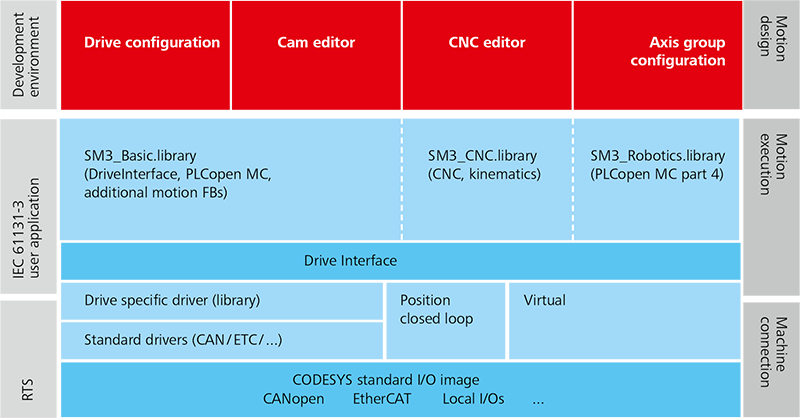The increasing demand for automated solutions in manufacturing has led to the rise of CNC Robotics as an essential technology for the future of production. In this article, we will explore the benefits and applications of CNC Robotics, and how it has become the industry’s game-changer. We will also discuss how CODESYS, a prominent player in the field, is paving the way for advancements in this technology.
Table of content:
- An Introduction to CNC Robotics
- The Role of CODESYS in CNC Robotics
- Applications of CNC Robotics in Manufacturing
- Collaborative Robots (Cobots)
- Benefits of Automation with CNC Robotics
- Robot Vision System
- Robot Vision AI Benefits
- Collaborative Robots for Manufacturers
- Conclusion
1.An Introduction to CNC Robotics
CNC Robotics is a combination of computer numerical control (CNC) and robotics technologies, designed to automate various manufacturing tasks. This advanced technology is designed to improve the efficiency, accuracy, and overall productivity of manufacturing processes.
1.1 What is CNC & Robotics?
CNC, or Computer Numerical Control, is a technology that uses computer algorithms to control machine tools and other industrial equipment. This control system allows for the precise and efficient production of complex parts, ensuring consistency across an entire manufacturing process.
Robotics is the field of engineering and science that deals with the design, construction, operation, and application of robots – machines capable of carrying out tasks autonomously or semi-autonomously, without direct human intervention.
By combining these two technologies, CNC Robotics offers a potent solution for manufacturers looking to streamline their processes and maximise their production capabilities.
CNC Robotics is a cutting-edge technology that has revolutionised the manufacturing industry. CNC Robotics uses computers to control machines such as lathes, mills, routers, and grinders. It is a combination of computer-aided design (CAD) and computer-aided manufacturing (CAM) that has streamlined and automated the manufacturing process.
CNC Robotics is a highly efficient and precise technology that can produce identical parts with high accuracy and repeatability. This technology has replaced traditional manufacturing methods that were time-consuming, labor-intensive, and prone to errors. With CNC Robotics, manufacturers can produce complex parts and components quickly and with minimal waste.
One of the significant advantages of CNC Robotics is its ability to work around the clock. Unlike traditional manufacturing, which is limited by human labor, CNC Robotics can work 24/7, increasing productivity and reducing lead times. The automation of manufacturing processes has also improved safety by reducing the number of accidents caused by human error.
CNC Robotics has also reduced the cost of production significantly. The automation of manufacturing processes has resulted in lower labor costs, reduced errors, and increased efficiency. Manufacturers can also save money on raw materials as CNC Robotics optimises the use of materials, reducing waste.

2. The Role of CODESYS in CNC Robotics
CODESYS, a leading provider of automation software, plays a significant role in the development and implementation of CNC Robotics technology. Their SoftMotion (CNC) toolkit, which integrates motion control and logic control into one system, is an essential component of this technology.
The CODESYS SoftMotion (CNC) toolkit enables programmers to tackle single-axis motion control, complex CNC control, and even robot applications within the same system. This integrated approach simplifies the development process and ensures seamless integration across various hardware components.
A key advantage of the CODESYS-Motion-CNC-Robotics package is its hardware independence. This means that the package can be used with various drive products, allowing manufacturers to switch suppliers without compromising their CNC Robotics systems. The connection between SoftMotion and hardware is established through device drivers, with CODESYS currently providing drivers for over 40 different drive products.
3. Applications of CNC Robotics in Manufacturing
CNC Robotics technology is applicable across various sectors, including automotive, aerospace, electronics, and consumer goods manufacturing. Some key applications of CNC Robotics in manufacturing include:
3.1 Assembly
CNC Robotics can automate complex assembly tasks, ensuring precision and consistency in the final product. This can be particularly beneficial for manufacturers working with intricate components or those that require precise positioning.
3.2 Welding
Robotic welding systems can significantly improve efficiency, accuracy, and safety in welding processes, particularly in industries such as automotive and heavy machinery manufacturing.
3.3 Painting
CNC Robotics can be used to automate painting and coating applications, ensuring a consistent finish across an entire production line. This not only improves product quality but also reduces the risk of contamination from human contact.
3.4 Material Handling
CNC Robotics can be employed for material handling tasks, such as moving and carrying heavy loads, sorting, and packing goods. This can help reduce the risk of injuries associated with manual material handling and improve overall efficiency.
3.5 Quality Control
CNC Robotics can be used to automate quality control processes, ensuring a consistent level of quality across an entire production line. This can be particularly beneficial for manufacturers working with large quantities of identical components.
4. Collaborative Robots (Cobots)
Collaborative robots, or cobots, are a subcategory of CNC Robotics that focuses on developing robots designed to work safely alongside humans. These robots are built with lightweight materials, rounded edges, and integrated safety features, enabling them to operate without posing a risk to human workers.
The concept of collaborative robots was first introduced in the mid-1990s, with the goal of creating robots that could work safely alongside humans. The first cobot was invented in 1996 by Northwestern University professors J. Edward Colgate and Michael Peshkin, and the technology has since evolved to encompass a wide range of applications.
Today cobots are used across various industries, including logistics, manufacturing, and industrial applications. They can perform tasks such as:
- Picking, sorting, and packing goods
- Quality control
- Machine tending
Cobots are also used in consumer and public-facing roles, such as information robots or security patrolling in guarded facilities.
5. Benefits of Automation with CNC Robotics
Implementing CNC Robotics technology can deliver significant benefits to manufacturers, including:
5.1 Advanced Automation with Reduced Costs
CNC Robotics enables manufacturers to access advanced automation capabilities without the high costs associated with traditional robotic systems. This can be particularly beneficial for small and medium-sized businesses looking to improve their production capabilities.
5.2 Flexibility
CNC Robotics systems are typically more flexible than traditional robotic systems, both in terms of hardware and programming. This allows manufacturers to repurpose their CNC Robotics systems for different applications as needed.
5.3 Safety
CNC Robotics, particularly collaborative robots, are designed with safety in mind. This enables them to work alongside human workers without posing a risk of injury.
6. Robot Vision System
Many CNC Robotics systems, particularly cobots, are equipped with cameras and sensors that enable them to “see” their surroundings. This robot vision system allows the robots to gather visual data and perform tasks more accurately and safely.
The process are as follows:
- Image capture
- Image processing
- Connectivity and response
The robot vision system captures images of objects within its line of sight, which are then stored in its database. This allows the robot to recognise objects and perform appropriate tasks based on its stored data.
Once the images have been captured and saved, the robot processes and analyses them to identify key features, such as shape, colour, and size. This information is then used to guide the robot’s actions.
Upon recognising an object, the robot performs the corresponding pre-programmed action. This can include tasks such as picking up an object, assembling components, or applying a coating.
7. Robot Vision AI Benefits
CNC Robotics systems equipped with robot vision and artificial intelligence offer several advantages over traditional robotic systems, including:
7.1 Increased Efficiency
Robot vision enables CNC Robotics systems to handle a wide range of tasks and adapt to variations in product design. This can be particularly beneficial for manufacturers working with products that have different colours, styles, or sizes.
7.2 Ensure Product Consistency
Robot vision systems can help ensure product consistency by automating quality control processes. This reduces the risk of human error and helps maintain a high level of quality across an entire production line.
7.3 Increased Reliability
CNC Robotics systems equipped with robot vision are generally more reliable than traditional robotic systems, as they can adapt their actions based on the visual data they gather.
7.4 Safe Working Environment
The use of sensors and cameras in CNC Robotics systems allows them to operate more safely around human workers. This can help reduce the risk of workplace accidents and improve overall safety in manufacturing environments.
7.5 Reduced Operating Costs
By automating various tasks and improving efficiency, CNC Robotics systems can help manufacturers reduce their operating costs. This can be particularly beneficial for small and medium-sized businesses looking to improve their production capabilities.
8. Collaborative Robots for Manufacturers
CNC Robotics, particularly collaborative robots, have become an attractive option for manufacturers looking to streamline their operations and reduce costs. Cobots offer several advantages over traditional robotic systems, such as advanced automation with reduced costs, flexibility, and safety.
Cobots provide manufacturers with access to advanced automation capabilities without the high costs associated with traditional robotic systems. This can be particularly beneficial for small and medium-sized businesses looking to improve their production capabilities.
For flexibility, collaborative robots are typically smaller and more portable than traditional robots, which allows them to be used for multiple purposes throughout the production line. Their programming can also be adapted to different tasks, making them a versatile solution for manufacturers.
Lastly, collaborative robots are designed with human safety in mind, allowing them to work alongside human workers without posing a risk of injury.
9. The Future of CNC Robotics
As manufacturing processes continue to evolve, the demand for advanced automation solutions, such as CNC Robotics, is expected to grow. Innovations in artificial intelligence, vision systems, and collaborative robotics will drive further advancements in this field, leading to even greater efficiency and productivity in manufacturing.
10. Conclusion
CNC Robotics is revolutionising the manufacturing industry by offering advanced automation solutions that improve efficiency, accuracy, and safety. With the help of innovative solutions like CODESYS SoftMotion and collaborative robots, manufacturers can streamline their processes and maximise their production capabilities. As technology continues to advance, CNC Robotics will play an increasingly important role in the future of manufacturing.
Contact us HERE to learn more about our experience with CNC Robotics.
Or to learn more about what we do we CODESYS here and how we can help your automation requirements, please click projects, products & services.
Ti2 is currently very focused on working with its global partners to secure stock and avoid long delay times in delivering products to their customers. Together with our trusted partners, we are here to provide solutions for your needs.
Please click here to email us your inquiry, we would like to hear from you.



